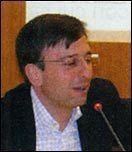Name Francesco Bianchini Discovered C/1702 H1 | ||
 | ||
Books Health plants of the world, The fruits of the earth | ||
The francesco bianchini s meridian line in santa maria degli angeli manortiz
Francesco Bianchini (13 December 1662 – 2 March 1729) was an Italian philosopher and scientist. He worked for the curia of three popes, including being camiere d`honore of Clement XI, and secretary of the commission for the reform of the calendar, working on the method to calculate the astronomically correct date for Easter in a given year.
Contents
- The francesco bianchini s meridian line in santa maria degli angeli manortiz
- Artificial Intelligence and Cognitive Science Seminar by Francesco Bianchini
- Life and work
- Books by Bianchini
- References
Artificial Intelligence and Cognitive Science - Seminar by Francesco Bianchini
Life and work
Bianchini was born of a noble family at Verona, the son of Giuseppe Bianchini and his wife, Cornelia Vailetti. In 1684 he went to Rome, and became librarian to Cardinal Ottoboni, who, as Pope Alexander VIII (1689), raised him to the offices of papal chamberlain and canon of Santa Maria Maggiore. Clement XI sent him on a mission to Paris in 1712, and employed him to form a museum of Christian antiquities. A paper by him on Giovanni Domenico Cassini's new method of parallaxes was inserted in the Acta Eruditorum of Leipzig in 1685.
He was elected a Fellow of the Royal Society of London in January 1713 after being proposed by Sir Isaac Newton.
His deduction of the rotational period of Venus was based on the observation of its surface using a 2.6" (66mm) 100 foot focal length aerial telescope. Today, we know that this is impossible, because of the thick cloud cover on this planet. He also worked on the parallax of Venus, and he measured the precession of the Earth's rotational axis.
As part of his efforts to improve the accuracy of the calendar, Bianchini was commissioned by Pope Clement XI to construct an important meridian line in the Basilica of Santa Maria degli Angeli e dei Martiri (the Basilica of Saint Mary of the Angels and the Martyrs) in Rome, a device for calculating the position of the sun and stars.
According to a Catholic News Service online news story by Carol Glatz from 5 August 2011, Pope Benedict XVI noted this when he explained the importance of astronomy- especially when clocks were primitive and prone to error- in the determination of certain liturgical celebration days and the times for certain daily prayers, such as the Angelus.
His point of view on the Copernican system is not evident, but it was noted that the picture of the planetary system in his book about Venus has an empty center.
Craters on Mars and the Moon are named in his honor.
He also worked as a topographer and archaeologist of ancient Rome, and as a collector.
Books by Bianchini
He published many books, including:
